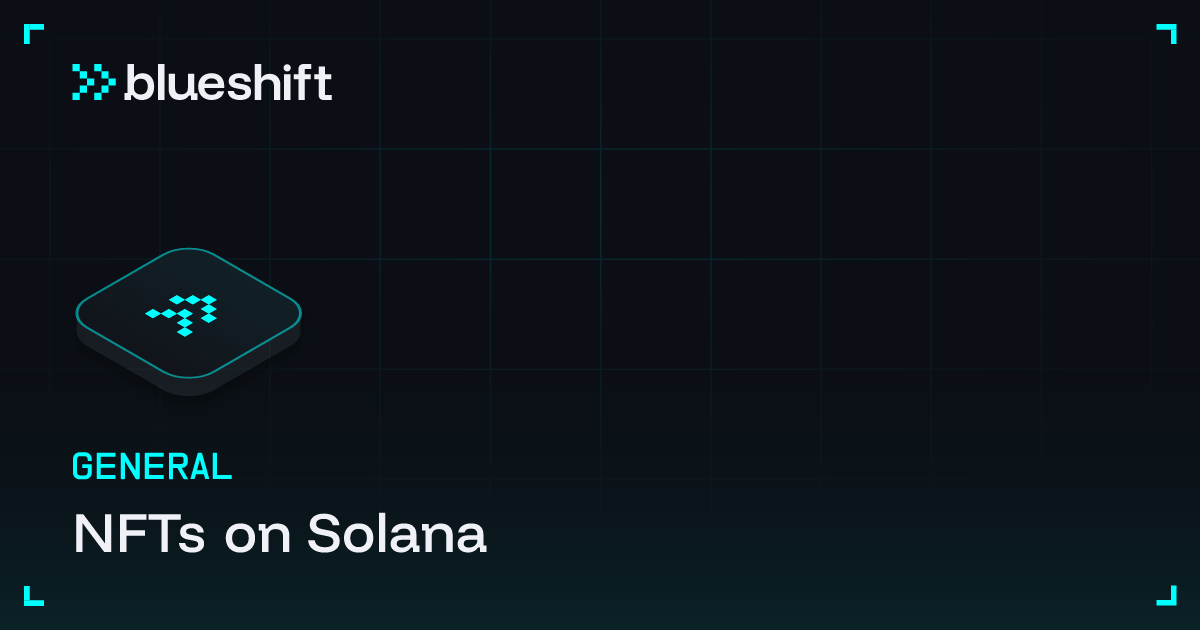NFTs on Solana

Non-Fungible Tokens (NFTs) are digital tokens with specific characteristics that distinguish them from fungible tokens like cryptocurrencies.
Unlike fungible tokens where each unit is identical and interchangeable, NFTs represent unique, indivisible digital assets that cannot be replicated or subdivided.
NFTs Properties
For a token to qualify as a true NFT, it must possess these essential properties:
Indivisibility: Contains no decimal places, ensuring you cannot own fractions like 0.1 of an NFT
Uniqueness: Has a supply of exactly 1, guaranteeing only one instance exists
Fixed Supply: No mint authority exists, preventing additional tokens from being created
Groupability: Can be organized into collections to group similar tokens while maintaining individual uniqueness
Rich Metadata: Includes readable data such as names, descriptions, images, and other attributes for display in explorers and wallets
For this reason, creating an NFT involves deploying a smart contract or interface that:
Creates a mint account with zero decimals
Mints a single token to the owner's wallet
Revokes mint authority to prevent future minting
Associates metadata accounts containing the token's descriptive information
Established protocols simplify this complexity significantly. Solana developers commonly use programs like mpl-token-metadata or mpl-core developed by Metaplex, which handle the technical implementation details and provide standardized interfaces for NFT creation and management.
Why Non-Fungible Tokens Matter
NFTs represent the first technical solution enabling provable digital ownership without trusted intermediaries. Before NFTs, digital assets existed solely within centralized platforms where ownership could be revoked arbitrarily.
Advantages Over Physical Assets
NFTs improve upon physical asset ownership by enabling programmable logic that responds to predetermined conditions.
Smart contracts can automatically distribute royalty payments to creators whenever their NFTs sell on secondary markets.
Transfer restrictions can prevent unauthorized movements of sensitive assets, while time-based mechanisms can unlock features or change properties based on specific dates or conditions.
Some NFTs even update their visual or functional properties dynamically, responding to external data feeds or user interactions.
New Economic Models
NFTs unlock economic structures that traditional systems cannot support.
Creator economics transforms how artists generate income by establishing perpetual royalty streams—every time an NFT changes hands, the original creator automatically receives a percentage of the sale price.
This creates sustainable revenue models that extend far beyond initial sales.
Community ownership emerges through collective NFT governance, where groups can jointly own valuable digital assets and make decisions about their use through decentralized voting mechanisms.
Meanwhile, digital labor compensation provides new frameworks for rewarding contributions to online communities, creative collaborations, and virtual world development in ways that traditional employment structures cannot accommodate.
Composability and Interoperability
NFTs achieve complete composability across applications and protocols, creating unprecedented flexibility in digital asset utility.
A single game item NFT can simultaneously function across multiple games with different mechanics, display in digital galleries and virtual worlds, serve as collateral in DeFi protocols for loans or yield farming, and interact with other protocols through smart contract integrations.
This interoperability operates without requiring permission from the original creator, establishing truly open digital economies where assets gain value through network effects and cross-platform utility rather than platform-specific restrictions.
Collections
A collection represents a group of NFTs that share common attributes, themes, or provenance, creating verifiable on-chain relationships between different assets.
Since anyone could theoretically create an NFT and falsely claim membership in a prestigious collection, collections maintain an authority (typically the original creator or authorized entity) who can verify which NFTs legitimately belong to the collection.
This verification process creates an immutable on-chain record stored within the NFT's metadata, establishing authentic collection membership that cannot be forged or manipulated after creation.
Collections serve multiple critical functions in the NFT ecosystem. They enable efficient discovery and browsing of related assets, provide brand identity and thematic coherence for creators, establish provenance and authenticity verification, and create frameworks for community governance and shared experiences among holders of collection assets.
Additionally, they create a very efficient way to group related tokens logically while maintaining their individual uniqueness and properties, making access control for same type of assets way more efficient and cheap.
Metadata
The Metadata serves as the descriptive layer that transforms raw NFT tokens into meaningful digital assets.
While the blockchain stores only the essential token information: ownership, supply, and basic identifiers; metadata provides the rich context that makes Fungible and Non-Fungible Tokens valuable and usable in applications.
The metadata structure typically follows established standards to ensure that wallets, marketplaces, and applications can consistently interpret and display NFT information regardless of which program created the token.
The metadata includes fundamental elements such as the asset's name and description, which provide human-readable context for what the NFT represents.
The image field contains a URI pointing to the visual asset, whether it's digital art, a profile picture, or a game item illustration. For more complex media, additional fields can reference animations, 3D models, or interactive content that brings the NFT to life in compatible applications.
Custom attributes extend metadata beyond basic descriptions, enabling sophisticated classification and filtering systems. These attributes can represent rarity traits in collectibles, statistical properties in gaming assets, or utility parameters in functional tokens. The flexible attribute system allows creators to embed any relevant data that enhances the NFT's value or functionality.
Some projects store metadata directly on-chain for maximum permanence (with a process that we call inscription), others use decentralized storage solutions like IPFS or Arweave to balance cost with durability, some use a centralized database. The main difference is that the chosen storage method directly impacts the NFT's long-term accessibility and the creator's ongoing responsibilities for maintaining the associated content.